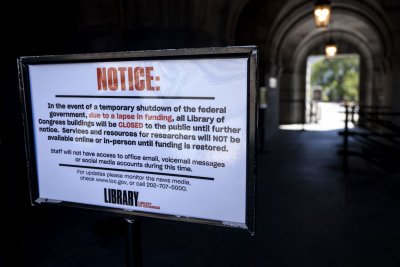KUALA LUMPUR, Malaysia — The U.S. State Department is firing more than 1,300 employees on Friday in line with a dramatic reorganization plan from the Trump administration that critics say will damage America’s global leadership and efforts to counter threats abroad.
The department has begun sending layoff notices to 1,107 civil servants and 246 foreign service officers with assignments in the United States, according to a senior department official who spoke on the condition of anonymity to discuss personnel matters.
Staff began to receive notices shortly after 10 a.m. Friday saying their positions were being “abolished” and that they would be losing access to the department’s headquarters in Washington as well as their email and share drives by 5 p.m., according to a copy of one of the notices obtained by the Associated Press.
Foreign service officers affected will be placed immediately on administrative leave for 120 days, after which they will formally lose their jobs, according to a separate internal notice. For most civil servants, the separation period is 60 days, it said.
“Headcount reductions have been carefully tailored to affect non-core functions, duplicative or redundant offices,” the notice says.
While lauded by President Trump, Secretary of State Marco Rubio and their Republican allies as overdue and necessary to make the department leaner, more nimble and more efficient, the cuts have been roundly criticized by current and former diplomats who say they will weaken U.S. influence and the ability to counter existing and emerging threats abroad.
The layoffs are part of big changes to State Department work
The Trump administration has pushed to reshape American diplomacy and worked aggressively to shrink the size of the federal government, including mass dismissals driven by the White House’s Department of Government Efficiency and moves to dismantle whole departments like the U.S. Agency for International Development and the Education Department.
USAID, the six-decade-old foreign assistance agency, was absorbed into the State Department last week after the administration dramatically slashed foreign aid funding.
A recent ruling by the Supreme Court cleared the way for the layoffs to start, while lawsuits challenging the legality of the cuts continue to play out. The department had advised staffers Thursday that it would be sending layoff notices to some of them soon.
The job cuts are large but considerably less than many had feared. In a May letter notifying Congress about the reorganization, the department said it had just over 18,700 U.S.-based employees and was looking to reduce the workforce by 18% through layoffs and voluntary departures, including deferred resignation programs.
Rubio said officials took “a very deliberate step to reorganize the State Department to be more efficient and more focused.”
“It’s not a consequence of trying to get rid of people. But if you close the bureau, you don’t need those positions,” he told reporters Thursday during a visit to Kuala Lumpur, Malaysia. “Understand that some of these are positions that are being eliminated, not people.”
He said some of the cuts will be unfilled positions or those that are about to be vacant because an employee took an early retirement.
Critics say the changes will hurt U.S. standing abroad
The American Foreign Service Assn., the union that represents U.S. diplomats, said Friday that it opposed the Trump administration’s cuts during “a moment of great global instability.”
“In less than six months, the U.S. has shed at least 20 percent of its diplomatic workforce through shuttering of institutions and forced resignations,” the organization said in a statement. “Losing more diplomatic expertise at this critical global moment is a catastrophic blow to our national interests.”
If the administration had issues with excess staffing, “clear, institutional mechanisms” could have resolved it, the group said.
“Instead, these layoffs are untethered from merit or mission. They target diplomats not for how they’ve served or the skills they have, but for where they happen to be assigned. That is not reform,” AFSA said.
Former U.S. diplomats echoed that sentiment, saying the process is not in line with what Congress had approved or how it’s been done under previous administrations.
“They’re doing it without any consideration of the worth of the individual people who are being fired,” said Gordon Duguid, a 31-year veteran of the foreign service under Trump and Presidents George W. Bush and Barack Obama. “They’re not looking for people who have the expertise … they just want people who say, ‘OK, how high’ ” to jump.
He added, “That’s a recipe for disaster.”
In a notice Thursday, Michael Rigas, deputy secretary for management and resources, said that “once notifications have taken place, the Department will enter the final stage of its reorganization and focus its attention on delivering results-driven diplomacy.”
The State Department is undergoing a big reorganization
The department told Congress in May of an updated reorganization plan, proposing cuts to programs beyond what had been revealed a month earlier by Rubio and an 18% reduction of U.S.-based staff, higher than the 15% initially floated.
The State Department is planning to eliminate some divisions tasked with oversight of America’s two-decade involvement in Afghanistan, including an office focused on resettling Afghan nationals who worked alongside the U.S. military.
Jessica Bradley Rushing, who worked at the Office of the Coordinator for Afghan Relocation Efforts, known as CARE, said in an interview with AP that she was shocked when she received another dismissal notice Friday after she had already been put on administrative leave in March.
“I spent the entire morning getting updates from my former colleagues at CARE, who were watching this carnage take place within the office,” she said, adding that every person on her team received a notice. “I never even anticipated that I could be at risk for that because I’m already on administrative leave.”
The State Department noted that the reorganization will affect more than 300 bureaus and offices, saying it is eliminating divisions it describes as doing unclear or overlapping work. It says Rubio believes “effective modern diplomacy requires streamlining this bloated bureaucracy.”
That letter made clear that the reorganization is also intended to eliminate programs — particularly those related to refugees and immigration, as well as human rights and democracy promotion — that the Trump administration believes have become ideologically driven in a way that is incompatible with its priorities and policies.
Lee and Amiri write for the Associated Press. Lee reported from Kuala Lumpur, Malaysia, and Amiri from New York.




















